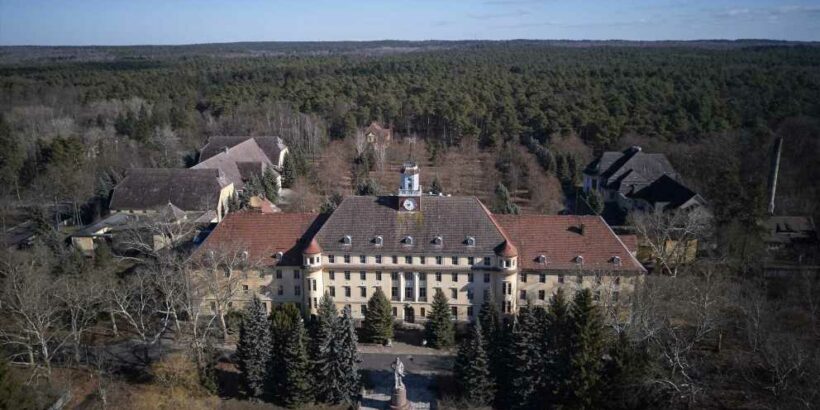DEEP inside a pine forest in eastern Germany lies a dark and looming compound known as "the forbidden city".
The abandoned military complex – once headquarters to the Kaiser, then the Nazis and eventually the Soviets – has seen all kinds of history in its halls.
The huge structure in the Wuensdorf neighbourhood of Zossen, 25 miles south of Berlin, is enclosed inside a 12-mile wall and a padlocked gate.
For over twenty years, the 2.3 square mile compound lay untouched and completely cut off since the last Russian troops left in a hurry in the early 1990s.
Some brazen locals led tours inside the chilling site, but mostly it has been used by adventurous teenagers as a drinking spot.
A giant statue of the communist revolutionary Lenin stands in front of a once grand yellow mansion.
read more on abandoned spots

Inside derelict skyscraper abandoned for 26yrs & is now agiant billboard

Inside train graveyard where Brit engines & carriages are rusting in the desert
Murals of communist heroes are peeling off the walls, beer cans line the floors and mould and rust has taken hold.
It is a shell of its former glory – a complex where some of the most important decisions in history were made.
Finished in 1961, the sprawling site served the last German emperor, Kaiser Wilhelm II, before becoming a Nazi command centre in World War 2.
It was repurposed for Nazi uses as they built fake country houses out of concrete that were designed to hide an underground system of bunkers and tunnels.
Most read in The Sun

Strictly thrown into chaos as star forced to pull out of this weekend’s show

Killer storm claims third victim amid warning ‘worst is yet to come’

Strictly chaos as Adam Thomas is BANNED from rehearsals

Emmerdale legend CONFIRMS soap exit after 25 years on ITV show
In the main bunker, Zeppelin, some of the most devastating Nazi war planning took place.
As Hitler fell and Germany was divided up, the compound became the headquarters of Soviet military high command throughout the Cold War.
Known as "Little Moscow" of Germany, it became home to 75,000 men, women and children until the Iron Curtain was torn down.
Over 40,000 troops were sent to it straight from Moscow and lived inside its walls for two to three years at a time.
Higher-ranking officers spent up to 12 years stationed there and were allowed to bring their wives and kids.
They were able to enjoy the more luxurious parts of the complex, including its huge pool, museum and stately homes.
A former Nazi casino was transformed into a concert hall for Soviets – chairs still sit in rows in front of the empty stage.
It earned the nickname "the forbidden city" as local Germans were barred from entering inside its high concrete walls.
Now, it forms a haunting reminder of both Germany's Nazi past and the former might of the collapsed Soviet empire.
It is a ghostly testament to 20th century history.
But there are now plans to open it up and turn it into a tourist site – and some of the barracks will be transformed into apartments for locals.
Elsewhere, another abandoned Soviet site sits under the shadow of Russia's Ural mountains – a rusting, eerie site of a graveyard of trains built in preparation for World War 3.
The steel skeletons of dozens of steam locomotives betray a time when the spectre of the mushroom cloud loomed dangerously near.
During the Soviet era it served as a nuclear war base – ready and waiting to whisk Russians to safety if all other transportation failed or was destroyed.
Read More on The Sun

Rain doesn't stop me from drying my clothes outside – my method's tried & tested

Quality Street fans mourn 'part of Christmas gone' after Nestle makes change
Time progressed, the Iron Curtain lifted, diesel trains took over and the threat of nuclear war waned – leaving a cemetery on rusty tracks.
Source: Read Full Article














